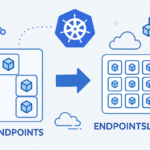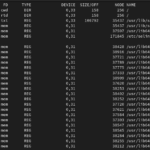Table of Contents
Greetings, fellow system admins and tech enthusiasts! In the expansive landscape of software development, packaging remains a crucial yet often mystifying aspect. Today, we embark on a journey into the depths of Debian packaging – an indispensable skill for Linux developers. Whether you’re a seasoned coder or just starting your foray into software packaging, this guide aims to demystify the process and equip you with the knowledge to confidently create Debian packages.
Before we delve into the intricacies of Debian packaging, let’s take a moment to revisit our previous discussion on RPM packages. If you missed it, catch up on our exploration of RPM packaging here. Building upon the foundational concepts covered in that post, we now shift our focus to Debian – a cornerstone in the realm of package management.
So, grab your preferred coding beverage, settle into your coding sanctuary, and let’s unlock the secrets of creating Debian packages together!
Introduction to Debian Packaging
Debian packages are the building blocks of Debian-based distributions. They make installing, upgrading, and removing software much easier. If you’re involved in software development or system administration, learning how to create .deb packages will save you a lot of time and headaches.
In this guide, we’ll walk you through the process of creating .deb packages from scratch, packaging a sample Python server application, and running it as a systemd service.
Prerequisites and Environment Setup
Before we dive into creating Debian packages, let’s set up our development environment with the necessary tools and libraries.
Install Required Packages
First, open your terminal and install the following packages:
sudo apt update
sudo apt install build-essential devscripts dh-make python3-venv
Here’s a brief overview of what these packages do:
build-essential: Essential tools for compiling software.devscripts: A collection of scripts to assist Debian package maintainers.dh-make: Helps create the Debian package structure.python3-venv: Provides support for creating virtual environments in Python.
Setting Up a Working Directory
Let’s create a working directory for our project:
mkdir ~/deb-package-tutorial
cd ~/deb-package-tutorial
Creating a Sample Python Server Application
We’ll create a simple Python HTTP server application that we will package into a .deb file and run as a systemd service.
Writing the Application
Create a new directory for the application source code:
mkdir hello-python-server
cd hello-python-server
Now, create a file named server.py and add the following code:
import http.server
import socketserver
PORT = 8000
Handler = http.server.SimpleHTTPRequestHandler
with socketserver.TCPServer(("", PORT), Handler) as httpd:
print("Serving at port", PORT)
httpd.serve_forever()
This simple server will serve files from the current directory on port 8000.
Structuring the Package Directory
Debian packages require a specific directory structure. Let’s create the necessary directories:
mkdir -p hello-python-server-1.0/usr/local/bin
mkdir -p hello-python-server-1.0/lib/systemd/system
Move the Python script to the appropriate directory:
cp server.py hello-python-server-1.0/usr/local/bin/
Detailed Directory Structure
The directory structure of a Debian package typically looks like this:
hello-python-server-1.0/
├── DEBIAN
│ ├── control
│ ├── postinst
│ ├── preinst (optional)
│ ├── postrm (optional)
│ └── prerm (optional)
├── usr
│ └── local
│ └── bin
│ └── server.py
└── lib
└── systemd
└── system
└── hello-python-server.service
DEBIAN Directory
The DEBIAN directory is crucial. It contains all the package control information:
control: Contains metadata about the package.postinst: Script executed after the package is installed.preinst(optional): Script executed before the package is unpacked.postrm(optional): Script executed after the package is removed.prerm(optional): Script executed before the package is removed.
The control file is mandatory, while the scripts are optional but useful for handling complex installation and removal procedures.
usr Directory
This is where the program’s executable files and other static files are stored, following the standard Unix directory structure. In our example:
usr/local/bin: Contains the Python scriptserver.py.
lib Directory
The lib directory is used for systemd service files and other system-related configurations:
lib/systemd/system: Contains thehello-python-server.servicefile, which defines how the Python server should be started and managed by systemd.
Writing the Control File
The control file contains metadata about the package. It’s crucial for the package manager to understand the package’s details.
Creating the DEBIAN Directory
Create a directory named DEBIAN inside your package directory:
mkdir hello-python-server-1.0/DEBIAN
Writing the Control File
Create a file named control inside the DEBIAN directory and add the following content:
Package: hello-python-server
Version: 1.0
Section: web
Priority: optional
Architecture: all
Depends: python3
Maintainer: Codefy Top <test@codefy.top>
Description: A simple Python HTTP server
A longer description of your package.
Control File Parameters
Package: The name of the package.Version: The version of the package.Section: The section under which the package will appear (e.g., web, utils, etc.).Priority: The importance of the package (optional, standard, required).Architecture: The target architecture (e.g., all for platform-independent packages).Depends: A list of dependencies required to run the package (e.g.,python3).Maintainer: The maintainer’s name and email.Description: A brief description of the package, followed by an extended description.
Creating a Post-Install Script
To ensure that the service starts after installation, create a post-install script:
nano hello-python-server-1.0/DEBIAN/postinst
Add the following content to the postinst file:
#!/bin/bash
systemctl daemon-reload
systemctl enable hello-python-server.service
systemctl start hello-python-server.service
Make the script executable:
chmod 755 hello-python-server-1.0/DEBIAN/postinst
Optional Control Files
preinst: Executed before the package is unpacked.postrm: Executed after the package is removed.prerm: Executed before the package is removed.
Creating a Systemd Service
To run the application as a systemd service, create a service file:
nano hello-python-server-1.0/lib/systemd/system/hello-python-server.service
Add the following content to the hello-python-server.service file:
[Unit]
Description=Hello Python Server Service
After=network.target
[Service]
ExecStart=/usr/bin/python3 /usr/local/bin/server.py
Restart=always
User=nobody
Group=nogroup
[Install]
WantedBy=multi-user.target
Description: A brief description of the service.After: Specifies the order in which services are started.ExecStart: The command to start the service.Restart: Specifies the restart policy for the service.UserandGroup: Specifies the user and group under which the service runs.WantedBy: Specifies the target under which the service should be started.
Building the Package
Use the dpkg-deb tool to build the package:
dpkg-deb --build hello-python-server-1.0
This command will create a file named hello-python-server-1.0.deb in your current directory.
Checking the Package
To check the package for errors, use the lintian tool:
sudo apt install lintian
lintian hello-python-server-1.0.deb
lintian will analyze the package and report any issues. Fixing these issues will help ensure your package adheres to Debian packaging standards.
Testing the Package
Install the newly created package to test it:
sudo dpkg -i hello-python-server-1.0.deb
Check the status of the service:
systemctl status hello-python-server.service
You should see that the service is running. To test the application, open a web browser and navigate to http://localhost:8000. You should see a directory listing of the current directory.
Logging and Debugging
To view the logs generated by the service, use:
journalctl -u hello-python-server.service
This will show the output of the Python server, which can be helpful for debugging.
To remove the package, use:
sudo dpkg -r hello-python-server
If the package removal fails due to dependencies, you can force the removal with:
sudo dpkg -r --force-all hello-python-server
Conclusion
Creating Debian packages is a valuable skill for software developers and system administrators. This guide provided a step-by-step process to create a .deb package from scratch, covering the environment setup, application creation, directory structuring, control file writing, systemd service creation, package building, and testing.
By following this guide, you can package your own software and ensure it runs as a systemd service, simplifying software deployment and management on Debian-based systems. Happy packaging!





